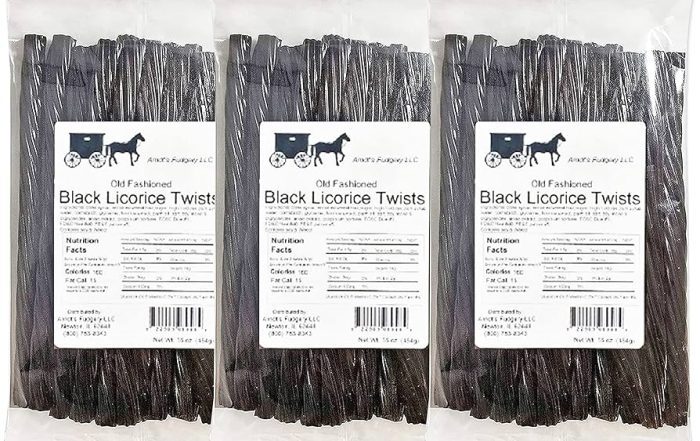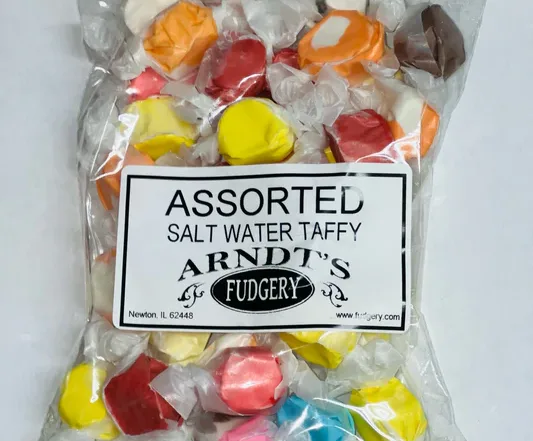
Latest Blogs
English toffee is more than just a sweet treat—it’s a piece of history, a labor of love, and a joy that brings people together. For those who appreciate the rich, buttery crunch of this classic confection, Arndt’s Fudgery offers a taste of tradition with a twist of nostalgia, using handmade recipes passed down through generations of Amish craftsmanship. Let’s dive into the story behind English toffee, exploring its origins, what makes it unique, and why it continues to be a beloved indulgence.
What Exactly Is English Toffee?
The Essence of English Toffee
English toffee is a traditional candy made from simple ingredients—sugar, butter, and sometimes nuts—cooked together until they form a crunchy, caramelized confection. The toffee is often coated with chocolate and topped with chopped nuts, adding a layer of richness and texture that is hard to resist.
A Closer Look at the Ingredients
At its core, English toffee is about the quality of its ingredients. The butter gives it that signature richness, while sugar caramelizes to create the perfect crunch. The addition of nuts, often almonds, adds a pleasant contrast to the sweetness, and a coating of chocolate makes it an irresistible treat.
The Science of Toffee-Making
Making English toffee involves precise timing and temperature control. The mixture must reach the “hard crack” stage, typically around 300°F (150°C), where the sugar fully caramelizes and sets into a hard, brittle texture when cooled. This stage is crucial—too hot, and the toffee can burn; too cool, and it won’t set properly.
The Rich History of English Toffee
Origins of English Toffee
English toffee has a long history, dating back to at least the 19th century. The exact origins are somewhat murky, but it’s believed that the toffee we know today evolved from earlier sugar confections made in England. The term “toffee” itself may have originated from the word “taffy,” which was used in the UK to describe a wide range of boiled sweets.
Toffee Across the Pond
Interestingly, what we refer to as English toffee in the United States is somewhat different from the toffee found in the UK. In Britain, “toffee” often refers to a softer, chewy candy, while what we call English toffee in the U.S. is known as “buttercrunch” in the UK. This version is hard, brittle, and often coated with chocolate.
A Traditional Amish Treat
At Arndt’s Fudgery, the tradition of English toffee is honored through the use of old Amish recipes. These recipes have been passed down through generations, ensuring that each batch of toffee is made with the same care and attention to detail as it was a century ago. This dedication to tradition is what makes Arndt’s English toffee stand out in a world of mass-produced sweets.
The Joy of English Toffee: Why We Love It
The Perfect Balance of Flavors and Textures
One of the reasons English toffee is so beloved is its perfect balance of flavors and textures. The rich, buttery toffee, the crunch of nuts, and the smooth chocolate all come together to create a treat that is both satisfying and indulgent. It’s a candy that appeals to all the senses—the sight of the glossy chocolate, the smell of caramelized sugar, the sound of the toffee breaking, and, of course, the taste.
A Versatile Treat for Any Occasion
English toffee is a versatile treat that can be enjoyed in many ways. It’s perfect for snacking, gifting, or serving at special occasions. Whether enjoyed on its own, crumbled over ice cream, or used in baking, English toffee adds a touch of sweetness and elegance to any moment.
Handmade Goodness from Arndt’s Fudgery
What sets Arndt’s Fudgery apart is their commitment to quality and tradition. Their English toffee is handmade in small batches, using traditional Amish recipes that have been perfected over the years. This ensures that each piece of toffee is not just a candy, but a work of art, crafted with care and love.

Is English Toffee Hard or Soft?
Understanding the Texture of English Toffee
One of the most common questions about English toffee is whether it is hard or soft. The answer largely depends on how it’s made. Traditional English toffee, like the kind made at Arndt’s Fudgery, is hard and brittle, offering a satisfying crunch with each bite. However, in the UK, toffee can also refer to a softer, chewier candy.
The Role of Temperature in Toffee Texture
The texture of toffee is determined by the temperature to which the sugar is cooked. As mentioned earlier, reaching the “hard crack” stage is key to creating that signature brittleness. If the toffee is
cooked to a lower temperature, it will be softer and more pliable, similar to what is known as “caramel” in the U.S.
The Joy of Crunch
For many, the hard, crunchy texture of English toffee is part of its charm. That first bite, where the toffee snaps under your teeth, followed by the slow melting of butter and sugar in your mouth, is what makes English toffee so satisfying. It’s a candy that demands to be savored.
Why Arndt’s Fudgery’s English Toffee Stands Out
A Commitment to Quality Ingredients
At Arndt’s Fudgery, quality is the cornerstone of everything they do. Their English toffee is made using only the finest ingredients, including fresh butter, premium chocolate, and the best nuts available. This commitment to quality ensures that every piece of toffee is as delicious as the last.
A Tradition of Excellence
The recipes used at Arndt’s Fudgery are more than just instructions—they are a legacy. Passed down through generations, these recipes have been carefully preserved and perfected, ensuring that each batch of toffee carries the same flavors and textures that have been enjoyed for decades.
Handmade with Love
In a world where so much is mass-produced, Arndt’s Fudgery takes pride in making their toffee by hand. Each batch is crafted with care, ensuring that every piece is unique and full of flavor. This dedication to craftsmanship is what makes their English toffee a cut above the rest.
Conclusion: Celebrate the Joy of English Toffee
English toffee is more than just a candy—it’s a celebration of tradition, craftsmanship, and indulgence. Whether you’re enjoying a piece on its own or sharing it with loved ones, there’s something truly special about this classic confection. At Arndt’s Fudgery, the art of toffee-making is alive and well, offering a taste of history with every bite. So, the next time you’re in the mood for something sweet, reach for a piece of English toffee and savor the joy it brings.
Check out our Facebook for more delicious news!
FAQs
Q1: What makes English toffee different from regular toffee?
English toffee is typically harder and more brittle than regular toffee, which can be softer and chewier. It is also often coated with chocolate and nuts, adding extra flavor and texture.
Q2: How should I store English toffee to keep it fresh?
To keep English toffee fresh, store it in an airtight container at room temperature. It can also be stored in the refrigerator for a longer shelf life, but be sure to let it come to room temperature before eating for the best texture.
Q3: Can English toffee be made without nuts?
Yes, English toffee can be made without nuts for those with allergies or preferences. The recipe can be adjusted to exclude nuts without affecting the overall texture or flavor of the toffee.
Q4: What is the best way to enjoy English toffee?
English toffee can be enjoyed on its own, with a cup of coffee or tea, or crumbled over desserts like ice cream. It also makes a great gift for holidays and special occasions.
Q5: Is it difficult to make English toffee at home?
Making English toffee at home can be a bit challenging, especially when it comes to reaching the right temperature. However, with a good candy thermometer and some practice, it’s possible to create delicious homemade toffee.







